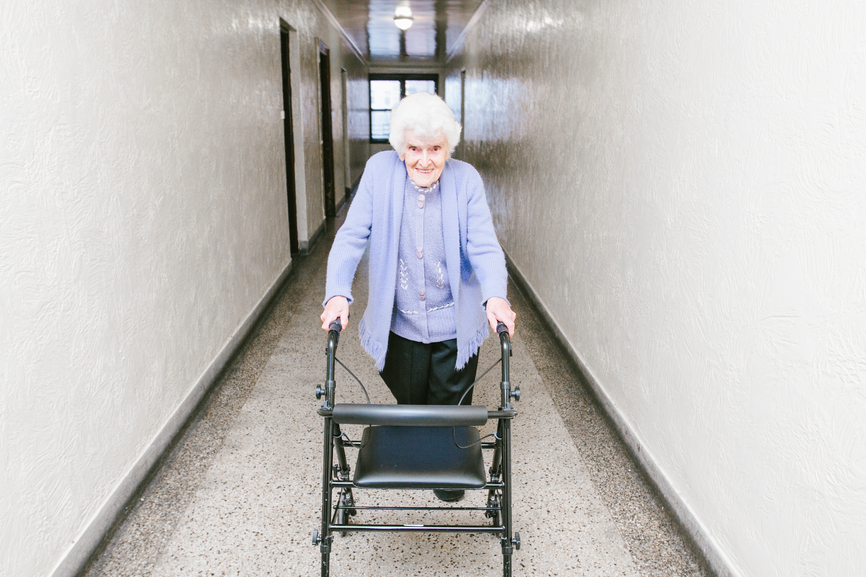If there is one rule to aging well, perhaps the “use it or lose it” motto sums it up best. Seniors who face mobility challenges whether it’s due to injury, illness, recovering from surgery or normal wear and tear, can remain independent longer and maintain an active lifestyle with the help of a walking aid.
Modern walkers have come a long way from the traditional standard models. No longer does grandma have to shuffle along lifting an awkward walker as she goes. Rolling walkers have become the new normal and many are fitted with brakes, a seat and storage baskets for shopping. For those who enjoy the outdoors, off-road walkers with bigger wheels can tackle rougher terrain and golf courses.
Proper Fit
Although most walkers have adjustable heights, generally they should be at wrist crease distance from the floor with arm relaxed at your side. Measure from the floor wearing walking shoes while standing up straight and looking forward. Have another person, or better yet a doctor or physical therapist measure to ensure a proper fit.
Proper Use
Walkers should be positioned to create a elbow bend that feels natural and comfortable. Improper fit can cause discomfort and poor posture. To walk safely with a walker, push the walker slightly ahead of you and then step into the threshold of the walker, repeating with small steps and good posture. Keep eyes forward to avoid stooping and possible tripping hazards.
When rising from a seated position, place the walker in front of the chair and move to the front edge of the chair, using the arm rests to push yourself up. Transfer your hands to the grips on the walker and take the time to find your balance before moving. Never tilt or pull on the walker to help you stand up and make sure all legs of the walker are on the ground for stability. Do not use a walker on stairs or an escalator.
To sit down using a walker, stand with your back to the chair and feel for the seat with the back of your legs. If possible, shift weight to the stronger leg and slide the weaker leg forward then move hands to the arms of the chair for support before slowly sitting.
For more information about safe use of a walker, visit the Canadian Red Cross webpage at http://www.redcross.ca/cmslib/general/4wheeled_walker_instructions.pdf and only use a walker as instructed by your healthcare provider.






Add Your Voice
0 Comments
Join the Discussion